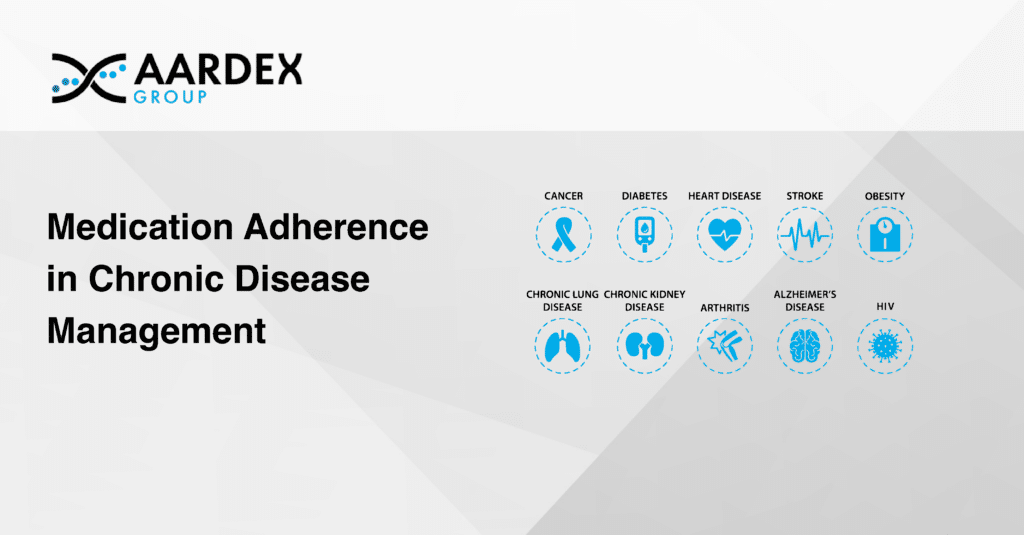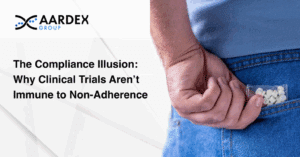Medication adherence is a vital component in managing chronic diseases effectively. However, it remains a significant challenge, with non-adherence rates reaching up to 50% among patients. This lack of adherence results in poor health outcomes and increased burdens on healthcare systems. Exploring innovative methods to measure and improve adherence, such as the Medication Event Monitoring System by AARDEX, can lead to better patient outcomes and reduced healthcare costs.
Understanding Medication Adherence and its Importance in Clinical Trials
Medication adherence refers to how well patients follow their prescribed treatment plans, including initiation of treatment, implementation of the recommended dosing regimen, and long-term persistence with the therapy. Consistent adherence is essential for achieving therapeutic goals, particularly for chronic conditions that require long-term medication use. Non-adherence, whether intentional or unintentional, can arise from various factors, including forgetfulness, side effects, complex medication regimens, or socioeconomic barriers. The consequences of non-adherence are severe, often resulting in increased hospitalizations, higher mortality rates, and significant financial impacts on healthcare systems.
In clinical research, ensuring that participants take their medications exactly as prescribed is necessary for accurately evaluating the safety and efficacy of new treatments. Non-adherence can significantly affect study outcomes, leading to inaccurate data, skewed results, and potentially the failure of a clinical trial. Reliable adherence data is a must to understand a drug’s true effects and make informed decisions about its future use. Monitoring of medication adherence helps ensure that study protocols are followed correctly and that any variations in patient outcomes are due to the treatment itself rather than inconsistent medication use. This accuracy is required for regulatory approval processes and for developing evidence-based guidelines that will be applied in broader clinical practice.
Traditional vs Innovative Adherence Measurement Methods
Traditional methods of assessing medication adherence, such as self-reports, pill counts, and healthcare assessments, have limitations due to their subjective nature and potential for bias. For example, self-reports can suffer from recall bias and desirability bias, where patients may not accurately remember their medication-taking behavior or may report what they think their healthcare provider wants to hear. Pill counts can also be misleading, as they are easy to falsify and do not confirm that the patient has taken the medication as prescribed.
In contrast, innovative technologies offer more reliable and objective measurements of adherence. A leading example is the Medication Event Monitoring System (MEMS) developed by AARDEX, a leader in medication adherence solutions, who has been advancing in how adherence is monitored and managed. MEMS uses smart caps on medication bottles that record in real time the exact times when containers are opened, providing detailed insights into patient behavior and a hard evidence for the trial. MEMS has become a gold standard in adherence research due to its ability to accurately track medication use without the need for patient input, reducing the risk of bias and improving the reliability of adherence data. MEMS technology is widely recognized for its precision and ease of use. It allows healthcare providers to gather accurate, real-time data on when patients take their medications. This data can be used to identify patterns of non-adherence and develop targeted interventions to support patients in maintaining their treatment regimens.
MEMS technology is particularly effective in clinical trials, where precise drug exposure data is needed for evaluating the efficacy of new treatments. By providing a clear picture of medication-taking behavior, MEMS enables researchers and healthcare professionals to make informed decisions about patient care and treatment adjustments. This accuracy ensures that clinical trial results reflect the true effects of the medication being tested, providing robust data that can support regulatory submissions and future clinical applications.
Innovative Solutions and Emerging Technologies
Despite these challenges, recent advancements in technology offer promising solutions to improve medication adherence. These innovations move away from traditional methods to new technologies, aiming to provide a comprehensive approach to managing adherence. Here are some brief descriptions of the pros and cons of available solutions, highlighting the benefits of the innovative ones that are shaping the future of medication adherence:
Directly Observed Therapy (DOT):
In DOT, a healthcare professional watches the patient take each dose of medication, ensuring adherence. While highly effective in hospital settings, this method is labor-intensive and inconvenient for both patients and providers in ambulatory care.
Healthcare Assessment:
Healthcare providers often evaluate patients’ medication-taking behaviors and knowledge through interviews and questionnaires. While this method is cost-effective and easy to implement, it relies heavily on subjective assessments and may overestimate adherence due to desirability bias.
Self-Reporting:
Self-reporting involves patients or their relatives completing questionnaires about medication adherence. These tools, like the Morisky Medication Adherence Scale (MMAS) and Brief Medication Questionnaire, are widely used due to their simplicity. However, they are prone to recall bias, desirability bias, imprecision in timing and may not always provide accurate/actionable adherence data.
Pill Count:
A simple and inexpensive method primarily used for drug accountability in clinical trials, pill count involves checking the number of remaining pills in a patient’s container during follow-up visits. Although it seems easy to implement, it is often inaccurate as patients might discard pills or fail to bring their containers to appointments.
Drug Level Measures:
Measuring drug levels in blood, urine, or saliva provides direct evidence of medication intake. This method is highly accurate but sparse, invasive, and resource consuming, often limiting its use to specific clinical settings.
Secondary Database Measurements:
Using data from electronic prescription services, pharmacy claims, or other health records, secondary database measurements offer insights into medication adherence at a population level. This approach has methodological challenges associated to the availability of the data bases and does not provide any insights on the medication intake behaviors.
Electronic Diaries:
Patients use electronic diaries on mobile devices to document their medication intake, providing an apparently convenient way to monitor adherence. While easy to use, this method is disconnected from the medication intake and comes often with nudges (reminders) that compromise the accuracy of the data.
Electronic Monitoring Devices:
Smart packages such as the Medication Event Monitoring System (MEMS) and Wisepill devices track medication adherence by recording each opening of the pharmaceutical packages. These tools offer real-time capture of data and are shown to be reliable and effective for monitoring drug exposure in clinical trials.
Video-Observed Therapy (VOT):
VOT is an adaptation of DOT where patients are monitored remotely via video while taking their medications. Compared to DOT, this method offers more flexibility and convenience, particularly for chronic disease management in settings where in-person observation is challenging. It is however intrusive and burdensome for patients to video records each drug administration, limiting its adoption and value.
Ingestible Biosensors:
These are advanced sensors embedded in tablets that communicate with wearable patches to confirm medication ingestion. Compared to electronic monitoring devices, this technology intends to prove ingestion but faces challenges such as high costs and ethical considerations related to privacy.
Challenges and Future Directions
Despite technological advancements, challenges in medication adherence persist. Barriers such as patient education, access to healthcare, and trust in healthcare providers play significant roles in adherence. Future efforts should focus on integrating technology with personalized patient support, ensuring that interventions are tailored to individual needs and circumstances. Additionally, there is a need for more comprehensive and user-friendly technologies that can seamlessly fit into patients’ daily lives without causing additional burdens.
Enhancing medication adherence is a complex but important task for improving health outcomes in chronic disease management. The use of innovative technologies, such as the Medication Event Monitoring System by AARDEX, provides new opportunities to accurately measure and improve adherence. These advancements, combined with a patient-centered approach, can significantly impact public health by reducing the negative consequences of non-adherence.
For further reading on recent developments in medication adherence, you can access the full article by Gackowski, Jasińska-Stroschein, Osmałek, and Waszyk-Nowaczyk here.
More news here.



